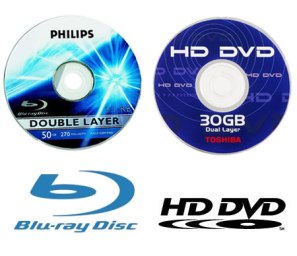 Radio Shack is testing a new store model under the name PointMobl. The three test stores in the Dallas area focus on “mobile” categories ranging from compact laptops and MP3 players to smart phones and GPS systems.
Radio Shack is testing a new store model under the name PointMobl. The three test stores in the Dallas area focus on “mobile” categories ranging from compact laptops and MP3 players to smart phones and GPS systems.
The depth of selection is greater than what a typical RadioShack store carries and there is no reference to the parent company to be found anywhere in the store or on the PointMobl website which lists the copyright owner as being “PointMobl Corporation”.
That last point is a very smart move which clearly shows Radio Shack understands where the brand sits in the minds of their target PointMobl customer. I’m making an assumption here that they are trying to appeal to upscale, tech-savvy customers in the 18 – 35 year old range based on the store description and the images shown on the website. Taking this “anonymous” approach removes one barrier to acceptance by those target customers. On the other hand, the way they pitch the concept on the website sounds like the typical safe, boring nonsense that I sometimes hear coming from corporate marketing departments trying to appeal to a much broader and older segment:
“It’s time to let your mobile life out to play. Give your productivity a power-up, stay connected, and take your inner rockstar on a world tour. It’s time for a true mobile outfitter. One who really listens to your needs, then leads you to the right solution.”
Blech! If you are 18 – 35, chances are you are already leading a “mobile life”, you are always connected, and when it comes to figuring out what gear you need, you do your own research because experience has shown that you usually understand the technology and the options better than the salespeople. The rest of the copy on the site doesn’t get much better. I should also point out that the website has at least one typographical error where they proclaim “You don’t need another mobile store – you need a good listener“. Come on guys, any spellchecker program would have found that.
Some analysts have expressed concern about testing new store concepts under the current economic conditions. I think Radio Shack has no choice but to explore alternatives given that a third of their existing store revenue comes from mobile sales and that business is being eroded by the likes of Best Buy who has opened their own chain of mobile specialty stores and expanded the mobile departments in over 900 of their superstores. Radio Shack is also losing business to the mobile carriers which continue to pop up like weeds in every stripmall nationwide. RadioShack has 6,000 company-operated and franchise stores and 700 wireless phone kiosks. That gives them easy access to real estate that would be retrofitted into PointMobl outlets. A slideshow of images from one of the test stores is available on YouTube:
This approach could end up generating higher revenue per square foot than existing Radio Shack stores. I’m fairly certain that is one of the test criteria and if the test proves this out, an expansion of the PointMobl concept could boost the chains revenue for a few years. While that idea seems appealing, I don’t see it is a differentiated strategy that can be defended over the long term. There’s nothing special here.
Store Aesthetics
The stores are described has being “upscale” with white fixtures and clean glass, but based on the following slide show, the interior of the store doesn’t generate that Apple store feel that I’m sure they were going for. Instead it looks cramped and dark. In some places, the dramatic lighting makes it seem almost museum-like; not the kind of feel that invites you to pick up the stuff and interact with it.
The Competition
The mobile carriers all have significant presence in this size footprint and it would be extremely easy for them to expand their product offerings to include a similar product mix. The only real differentiation here might be in the ability to offer multiple mobile carriers in one store, but that’s not unique either considering Best Buy’s strong position in the market and the growing presence of mass merchants like Walmart and Target in the mobile space.
In order for PointMobl to really be sustainable, it must be able to offer the customer an experience that no one else can. I just don’t see that happening with categories that are already commodities.
 One could argue that Circuit City does not have as many detractors as Comcast, but there are clearly opportunities out there.
One could argue that Circuit City does not have as many detractors as Comcast, but there are clearly opportunities out there.

 My new Twitter friend
My new Twitter friend 
 Earlier this week, I
Earlier this week, I 


 ….No, its never too early to look at the future of Consumer Electronics. Question is, when will the average consumer be able to get this stuff….
….No, its never too early to look at the future of Consumer Electronics. Question is, when will the average consumer be able to get this stuff….